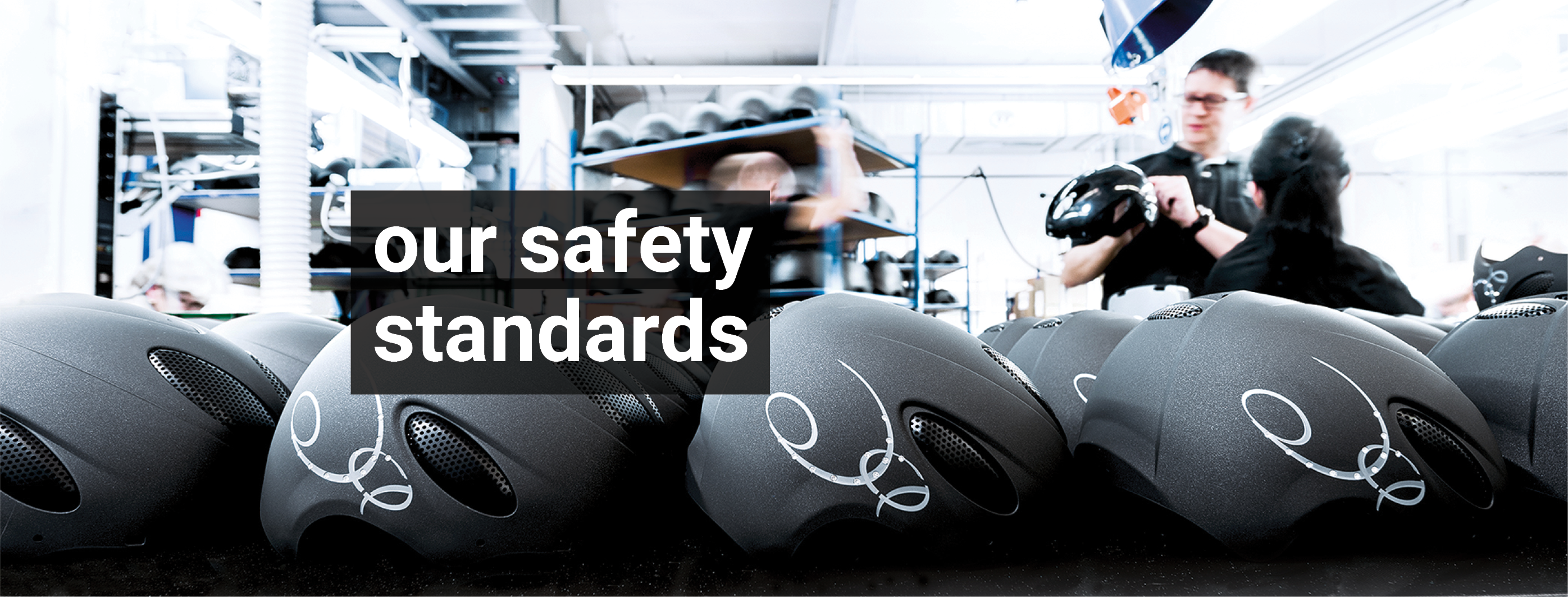
uvex riding helmets certified SEI/ASTM F1163-15 for US and Canada
When it comes to safety standards, more is not more.
We take our motto and guiding principle of “protecting people” seriously. Uvex riding helmets are designed to offer maximum protection for our riders in the event of an accident or fall. One of the ways we do this is by meeting the testing standards set by organizations like ASTM International, which ensures quality and consistency across all manufacturers in the industry.
Uvex chooses to design riding helmets that meet or exceed the current highest safety standard for the region in which they will be distributed, rather than a single helmet to meet all international testing requirements. In the US and Canada, that means uvex riding helmets are designed from the start according to the requirements for ASTM F1163-15 certification. In Great Britain, or the EU, where different organizations set the safety standards for those regions, helmets sold there will be certified PAS 015:2011 (Great Britain) or VG1 01.040 2014-12 (EU).
It’s far more expensive to design, test, and certify helmets for individual regions this way – so why does uvex choose to certify each helmet to a single standard?
Single versus multiple helmet safety standards: which one offers better protection?
At uvex, every decision is made for the safety of the rider above all else, informed by our long experience creating safety and protection equipment to the highest standards. A helmet that meets multiple testing requirements might sound safer, but in reality, designing for multiple standards at once limits the maximum protection that can be achieved. Certification in each of the 3 international standards – F1163-15, PAS 015:2011, VG1 01.040 2014-12 – means only that the helmet has satisfied the minimum requirements for testing. It’s better to design a helmet right from the start with one set of safety standards in mind, rather than a helmet that might meet multiple testing requirements but cannot offer maximum protection for any single set of standards.
While ASTM F1163-15 is the current highest testing standard for the United States and Canada, uvex helmets routinely exceed these standards. For example, the extended shell on the uvex perfexxion II and essential II helmets covers a greater area of the rider’s head than is required, providing additional protection for the neck and back of the head.
Precise adjustments lead to increased comfort and wearability. Systems like the IAS 3D allow the rider to adjust the circumference as well as the height of the helmet to achieve a perfect, individualized fit for their head shape.
The uvex exxential II with MIPS also offers additional protection from rotational forces in the event that a rider lands at an angle with the inclusion of the Multi-Directional Impact Protection System, a moveable second shell fitted between the inner padding and outer shell of the helmet.
By not compromising in design, materials, and technology in order to meet multiple standards, uvex is able to better serve riders in each region with helmets that offer maximum protection possible.
